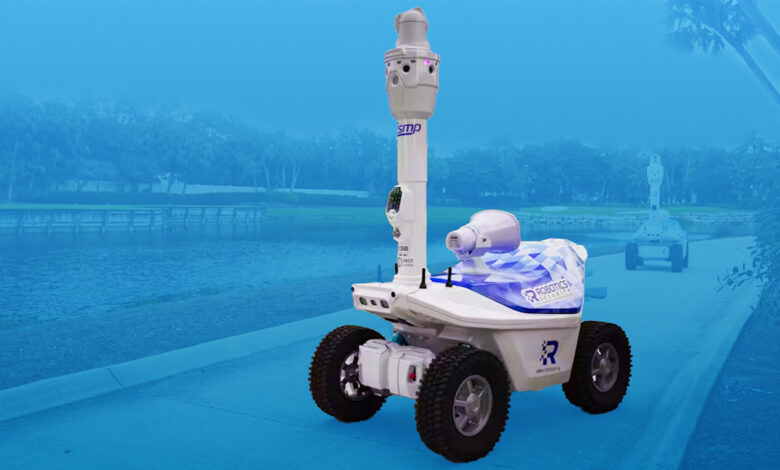Do advanced security robots work better when they look friendly?

New “Wall-E”-style security robots choosing a non-threatening appearance – but they still come with a strong surveillance function.
Advanced security robots are the next big thing that will change society’s behavior.
While they’re not yet ubiquitous, mobile security robots, as opposed to the standard, static security cameras with which we’re all familiar, are coming to both public, private, ad corporate spaces.
Quite how they’ll look and behave, and the range of functions, powers, and databases to which they’ll have access to ensure the security of their beat, are issues that are still evolving.
SMP Robotics is erring on the side of friendly invisibility in its range of security robots.
While other companies, from Kody Robots, which makes the Robocop-like Athena robot to Boston Dynamics with its now almost ubiquitous doglike Spot robot, have chosen to build a degree of intimidation into their designs to work as a deterrent, SMP has gone a more Wall-E way.
Looking more like golf buggies with a flashing “face,” the flagship SMP security robots, the Argus range, have just as much high-tech security equipment under the hood. But the low profile they assume makes them probably more forgettable by the human beings they’re observing – potentially promoting a false sense of security in would-be wrongdoers.
They patrol autonomously, avoid obstacles, and communicate with one another as needs be to monitor activity. They can detect potential dangers as well as active rule-breaking, and combine visual management systems with alarms that can deter potential infractions.
They’re terrain-agnostic, meaning they’re built for everything from sand dunes to snowcaps, and they carry thermal imaging cameras, so they can identify potential wrongdoers by both day and night.
What’s more, in the event of GPS failure, they have a backup navigation system.
That means it takes more than an internet-available GPS jammer to get past the Argus robots.
All of which makes them a fairly formidable AI-powered security system.
But the choice to match all that technology with an unthreatening design means humans are likely to tune them out of their daily interactions – just as they do with standard static surveillance cameras.
And that’s how you make advanced security robots a fact of 21st century life.



